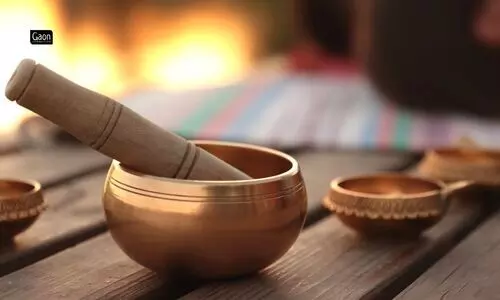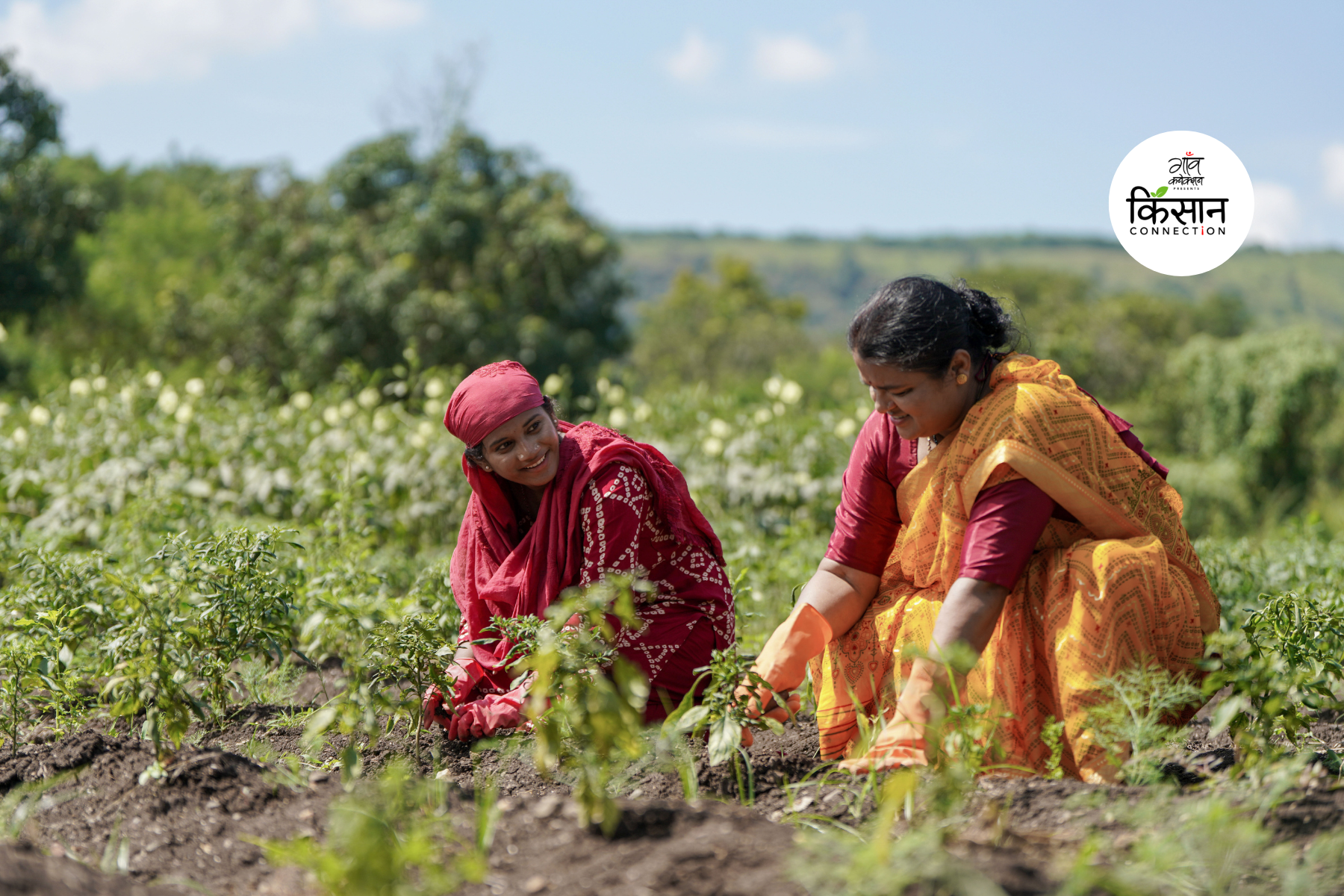Jamshedpur, Jharkhand
Tashi Namgyal from Ladakh, worried that healing practices that were integral to the part of the world he came from, were disappearing altogether for want of proper organisation and structure. Namgyal said amchis, the traditional healers are still an indispensable part of the lives of local communities in Ladakh. But, for how much longer, is his question.
His concern was shared by the more than 150 other practitioners and believers of traditional medicine who gathered at the five-day conclave organised for them by the Tata Steel Foundation (TSF) as part of its annual programme, Samvaad, in Jamshedpur, Jharkhand. The healers had come from tribal communities across Maharashtra, Meghalaya, Arunachal Pradesh, Tamil Nadu, Rajasthan, Madhya Pradesh, Jharkhand, Chattisgarh, Tripura, Odisha, and Ladakh.
The big ask from most of the tribal healers was recognition and validation for themselves and their practices. They feared that without proper documentation and authentication, the orally accumulated wisdom of hundreds of years about medicinal plants, herbs and roots would be wiped clean.
Traditional healing is an important yet often underestimated element of healthcare. According to the World Health Organization, it is estimated that about 80 per cent of the ailing population in developing countries depends on traditional healing for its primary healthcare needs.
Also Read: In this tribal village in Jharkhand, women ‘own’ their houses
Though there is no definite data on the number of traditional healers in India, available information points towards a figure of anywhere between half a million and two million.
“Without registration and validation traditional healers are nothing. There must be some certification, a process of registration and financial help so that the healers can continue to nurture their practices,” Namgyal, director, Ladakh Amchi Sabha, that preserves and traditional Tibetan medicine, Sowa Rigpa that has been around for hundreds of years in Himalayan Ladakh, but which is now under threat, told Gaon Connection. “We must first seek to protect and nurture the practitioners. Only then will protecting and conserving herbs and plants mean anything,” he said.
A slippery slope
But that is a slippery slope. For many of the healers, astrology and spiritual chants are an inseparable part of the healing process, but these do not conform to ‘scientific temper’, and are therefore difficult to legitimise. There are legal hurdles because these healing practices are not scientifically validated, even though they are an indispensable and undeniable part of healthcare amongst rural communities.
To study these issues, in 2019, through Samvaad, the Tata Steel Foundation formed a collective called the National Tribal Traditional Healers Association of India. It identified 18 healers who could become trainers in their respective communities. A workshop was organised where the healers were introduced to proper documentation and assessment of local healing traditions. The 18 healers went back to their communities, identified new tribal healers and introduced them to the goals and objectives of the collective and formed new groups to document existing tribal healing knowledge.
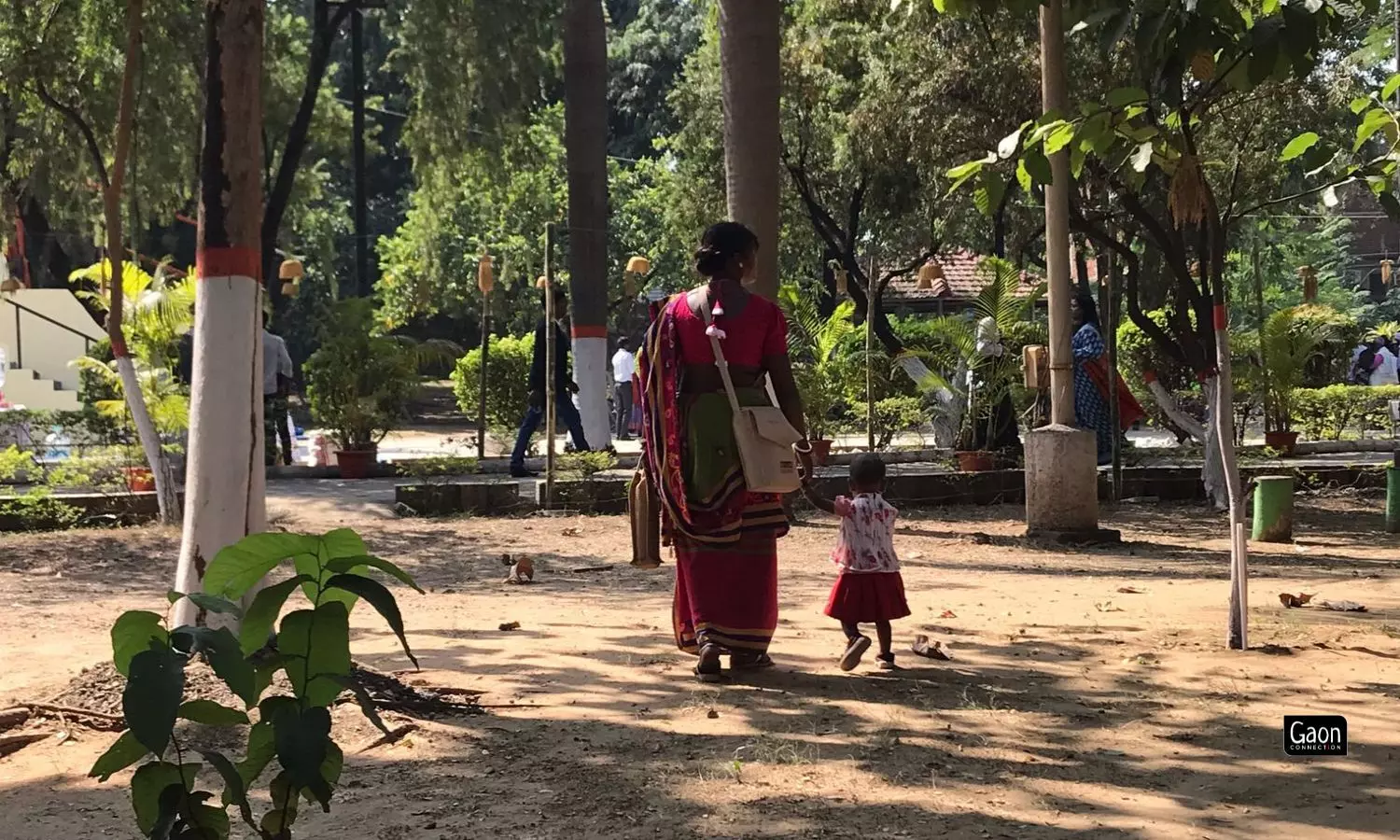
The Tata Steel Foundation formed a collective called the National Tribal Traditional Healers Association of India. It identified 18 healers who could become trainers in their respective communities.
Since then, around 120 healing practices have been documented. According to a spokesperson of TSF, the vision is to work with the healers and promote documentation of healing practices and build a community level repository of their knowledge. Can traditional healing practices then be formally brought into the fold of rural health and be acknowledged as a possible alternative to conventional medicine as we know it today, was the question.
Dr Vijayalakshmi Asthana, Principal Scientist, Council of Scientific and Industrial Research-Traditional Knowledge Digital Library (CSIR-TKDL), acknowledged that traditional healing practices have an important place in rural health where the belief system plays a critical role.
“But, having said that, rather than traditional health practices being an alternative to conventional medicine, I would say that they could be complementary and integrative. They have a definite future in health research,” she told Gaon Connection.
Also Read: An Invitation to Walk With Tribal Communities and Experience Their Food, Music and Art
CSIR-TKDL systematically and scientifically converts and structures the available contents of ancient texts, including Indian systems of medicines such as Ayurveda, Siddha, Unani and Sowa Rigpa.
According to Asthana, in order to be acknowledged or to gain wider acceptance, there is the need for scientific validation.
“Although these healing practices are time tested, it is also necessary to recognise that the quality, identity, purity of the medicinal ingredients will affect the efficacy and also involve side effects, if any, and documentation of all this is very important for their protection and preservation,” she said.
Ethical documentation is key. This means recording the information only with prior informed consent from the knowledge holder/ provider.
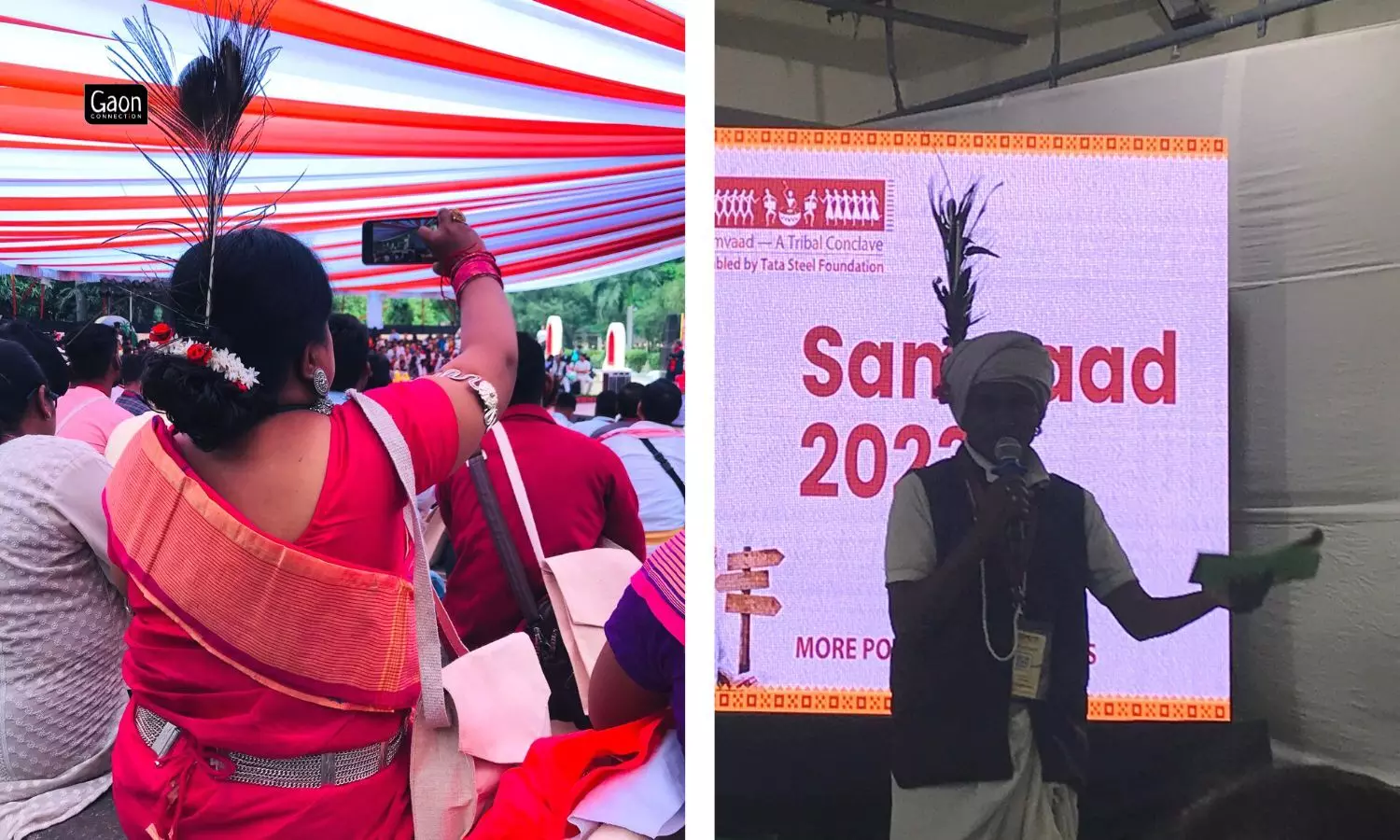
A number of traditional healers have benefited from this network created through Samvaad by Tata Steel Foundation.
“It is mandatory and the knowledge holder/ provider should be clearly acknowledged and compensated,” the scientist said, adding the documentation should be clear and succinct and as elaborately correlated with currently understood scientific terms as possible.
At Samvaad, the audience of healers was all ears as she walked them through how to go about the preliminary documentation at their level. A good beginning, she said, would be video recording or photographing the plants, writing down their local names, finding out their scientific names, how the particular plant was used as medicine, its dosage and so on. She also warned against traditional wisdom being hijacked.
A number of traditional healers have benefited from this network created through Samvaad by Tata Steel Foundation.
Sarojini Goyal from the Panika tribe in Chhattisgarh is one of them. Her grandfather and father taught her all she knows about medicinal plants. As a child, she went foraging with them in the forests of Chhattisgarh and watched as they administered herbal concoctions to sick people who came to them for a cure.
When she grew up, she attended a yearlong course organised by the United Nations Development Programme. “I learnt to be a village botanist. I learnt the scientific terms for the indigenous medicinal plants, and today there are PhD students and other researchers who I help,” she said.
Sarojini is a member of the Biodiversity Management Committee in Korba district. She is also pursuing her higher studies and is in her final year of M.Sc Botany at Korba, and is planning to do her PhD as well.
Also, it is her knowledge of traditional medicinal herbs which has helped her set up the Nishtha Herbal in Korba district, Chhattisgarh— where she employs women and manufactures healing brews, powders, oils, tablets and even laddoos.
Protective measures need of the hour
A very vocal social worker, Chandrahas Patel, from Madhya Pradesh introduced his team of 12 healers from his state who had come with him to Jamshedpur for Samvaad. The 56-year-old has been involved in tribal welfare work for 28 years and is currently secretary of the branch office of the non-profit Gram Seva Trust at Mandla district.
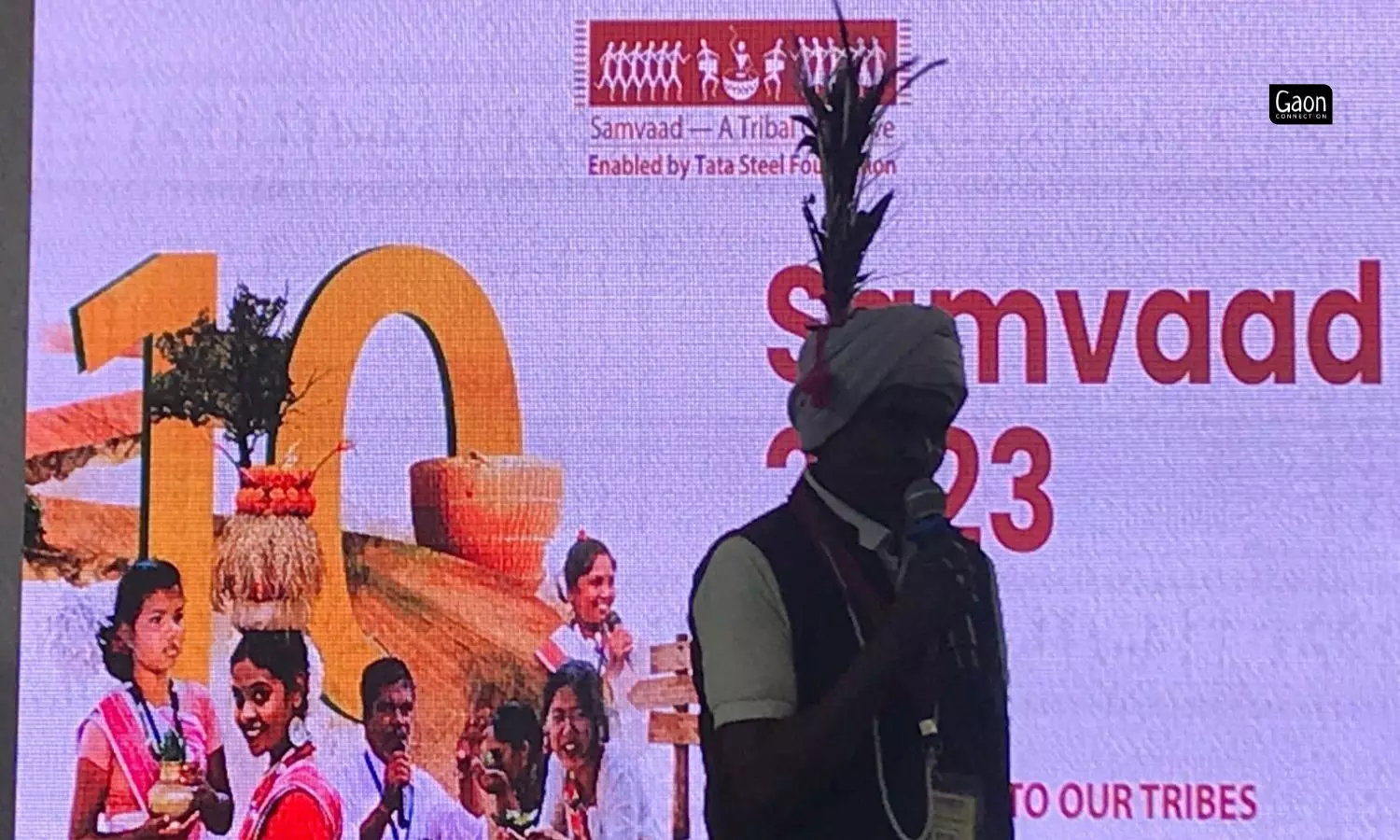
Traditional healers can play a critical role in biodiversity management. They already have recognition and respect in the villages as they are the first point of contact in times of illness.
“Ours is a tribal-dominated region with plenty of forests where medicinal plants grow. The young people you see with me here are from families of healers from the Gond community who are learning about traditional healing practices,” he said.
Also Read: Tribal History Kept Alive Through Oraon Art
He said there was an urgent need to raise awareness and sensitise the communities against exploitation. “They must know that their traditional knowledge and the medicinal plants they have on their land is a precious commodity, valuable beyond words,” he said. He too spoke of the importance of flagging endangered plants, documenting them and having strong protective measures in place. “I strongly believe every panchayat should have a space to grow these medicinal plants,” he said.
Kaushik Das, head of the Development Corridor Project of Tata Steel Foundation seconded Patel.
“Traditional healers can play a critical role in biodiversity management. They already have recognition and respect in the villages as they are the first point of contact in times of illness. There are funds in the Gram Panchayat Development Plan that can help these healers with preserving and documenting indigenous knowledge about the flora and fauna,” said Das.
He added that by participating in gram sabhas and drawing attention to their role and their valuable knowledge, traditional healers could move ahead.
“Of course, unless their medicines are lab tested or WHO approved there can be no question of ‘authentication’. But there are still ways and means of drawing the attention of central and state governments that have funds earmarked for protecting and promoting biodiversity which is so integral to traditional healing practices,” he said.

